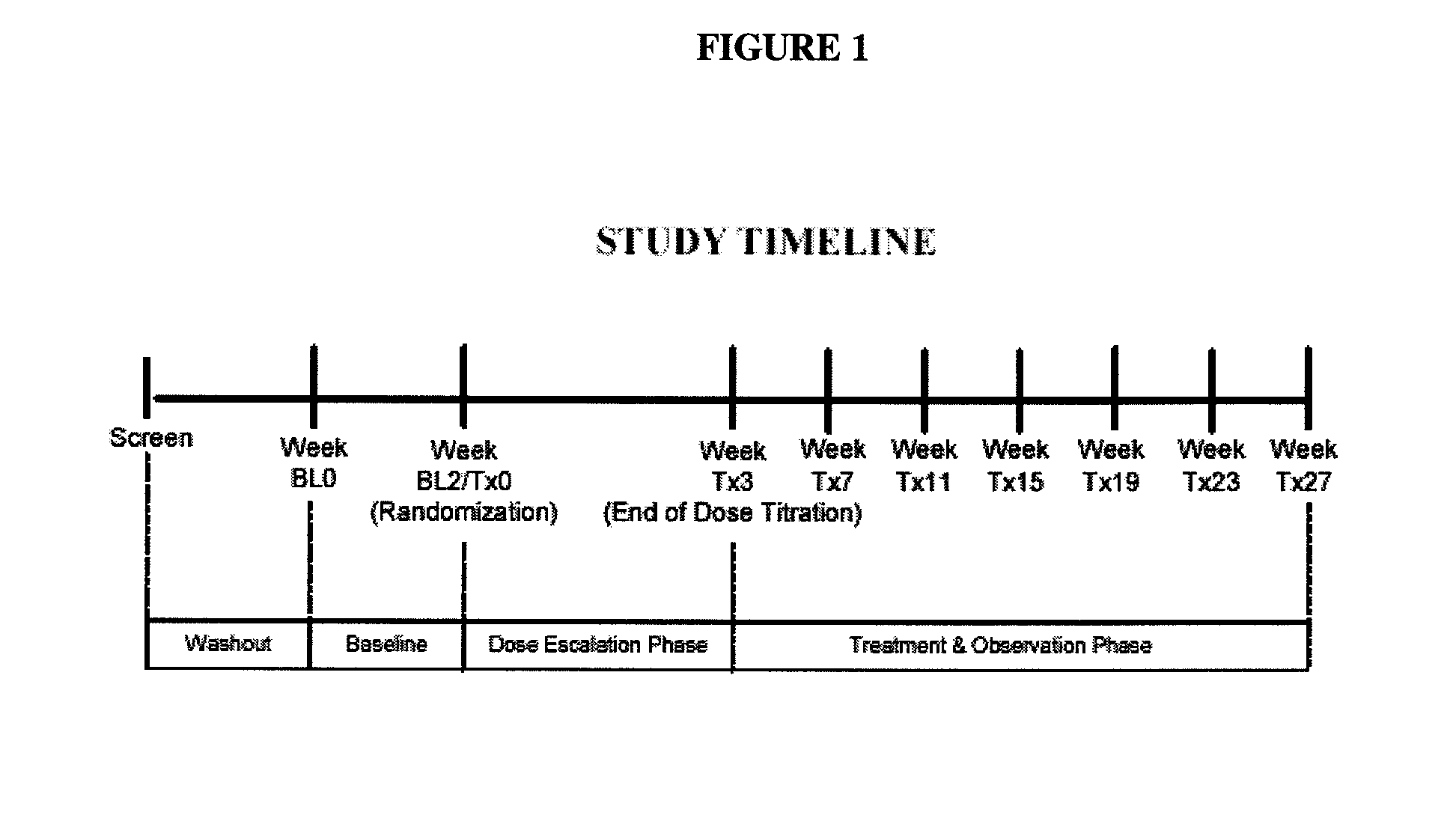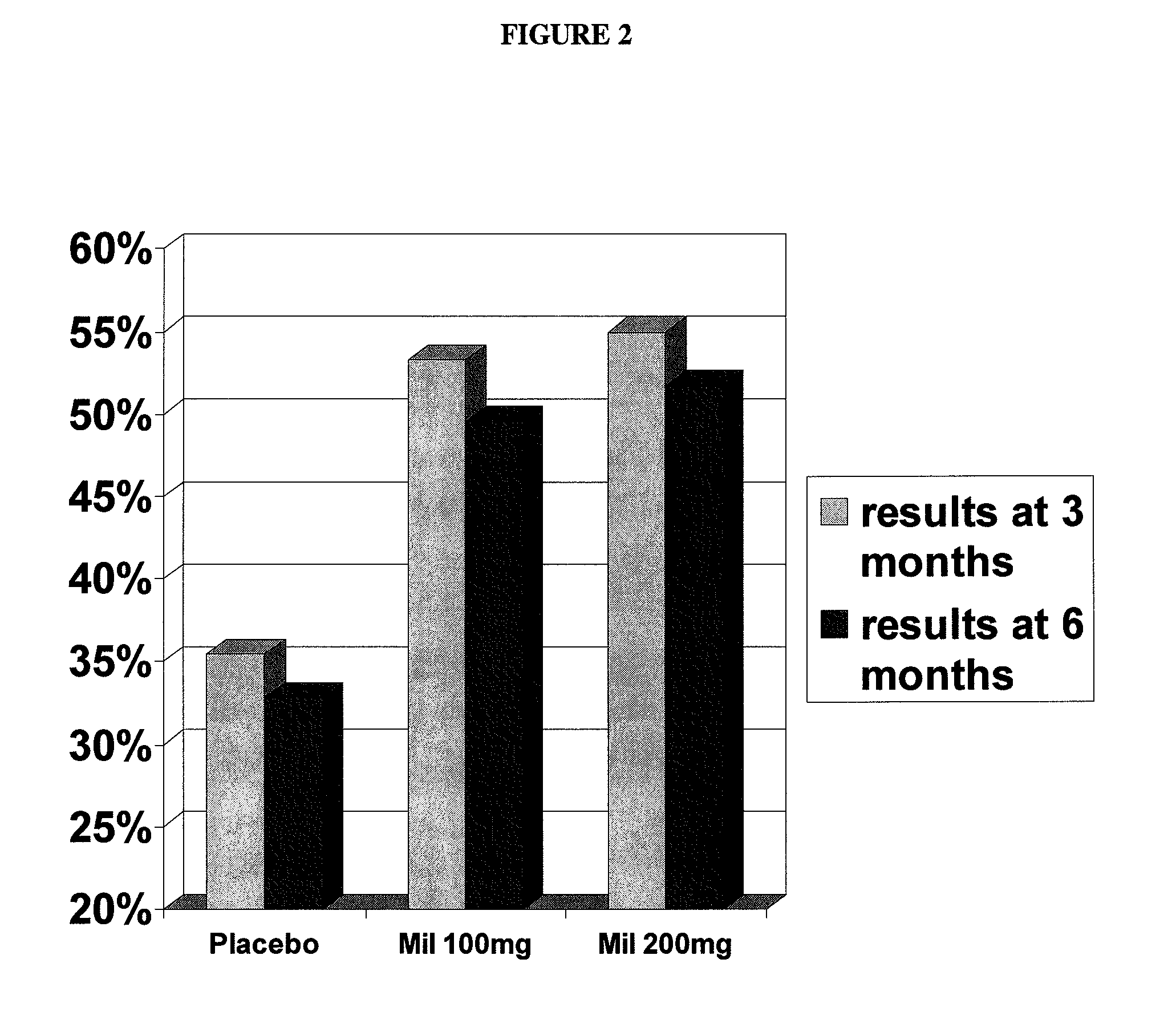Milnacipran for the treatment of cognitive dysfunction associated with fibromyalgia
a cognitive dysfunction and fibromyalgia technology, applied in the field of cognitive dysfunction associated with fibromyalgia, can solve the problems of fatigue, sleep disturbance, morning stiffness, and sedating qualities that often override the usefulness of other applications, and achieve the effect of improving efficacy and effective treatmen
- Summary
- Abstract
- Description
- Claims
- Application Information
AI Technical Summary
Benefits of technology
Problems solved by technology
Method used
Image
Examples
example 1
A Multi-Center Double-Blind, Randomized, Placebo-Controlled Study of Milnacipran for the Treatment of Fibromyalgia
[0071] The primary objective of this study was to demonstrate safety and efficacy, both clinical and statistical, of milnacipran in the treatment of the fibromyalgia syndrome. The primary outcome was a composite responder analysis assessing response rate at weeks 14 and 15, and the secondary analysis assessed response rate at weeks 26 and 27.
[0072] Other objectives of this study were to:
[0073] 1. compare statistical and clinical efficacy of 100 mg / day and 200 mg / day milnacipran in the treatment of the fibromyalgia syndrome based on each component of the composite responder analysis, as well as on a number of additional secondary endpoints including fatigue, sleep and mood, and cognition; and
[0074] 2. establish and compare the safety profiles of 100 and 200 mg milnacipran daily in patients with FMS.
Methodology
[0075] This was a multi-center, randomized, double-blinde...
example 2
A Multicenter, Double-Blind, Randomized, Placebo-Controlled Monotherapy Study of Milnacipran for Treatment of Fibromyalgia
[0114] The primary objective of this study was to demonstrate the safety and efficacy, both clinical and statistical, of milnacipran in the treatment of fibromyalgia syndrome (FMS) or the pain associated with fibromyalgia. The primary outcome was a composite responder analysis assessing response rates of two doses (100 mg / day and 200 mg / day) of milnacipran as compared with placebo at Visit Tx15 (week 15).
[0115] Secondary objectives were (i) to compare statistical and clinical efficacy of 100 mg / day and 200 mg / day of milnacipran with placebo in the treatment of FMS, based on the time-weighted average of each component outcome of the composite responder endpoint from Visits Tx3 to Tx15 and (ii) to establish and compare the safety profiles of 100 mg / day and 200 mg / day milnacipran in patients with FMS.
Methodology
[0116] This was a multicenter, randomized, double-...
PUM
| Property | Measurement | Unit |
|---|---|---|
| Time | aaaaa | aaaaa |
| Time | aaaaa | aaaaa |
| Mass flow rate | aaaaa | aaaaa |
Abstract
Description
Claims
Application Information
 Login to View More
Login to View More - R&D
- Intellectual Property
- Life Sciences
- Materials
- Tech Scout
- Unparalleled Data Quality
- Higher Quality Content
- 60% Fewer Hallucinations
Browse by: Latest US Patents, China's latest patents, Technical Efficacy Thesaurus, Application Domain, Technology Topic, Popular Technical Reports.
© 2025 PatSnap. All rights reserved.Legal|Privacy policy|Modern Slavery Act Transparency Statement|Sitemap|About US| Contact US: help@patsnap.com



